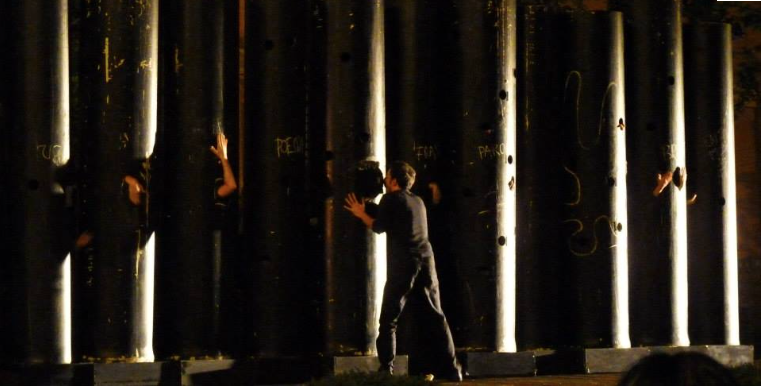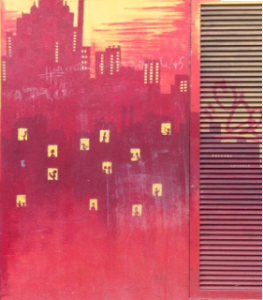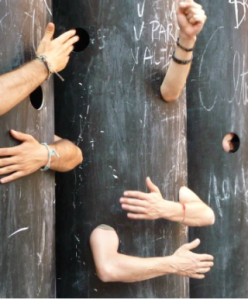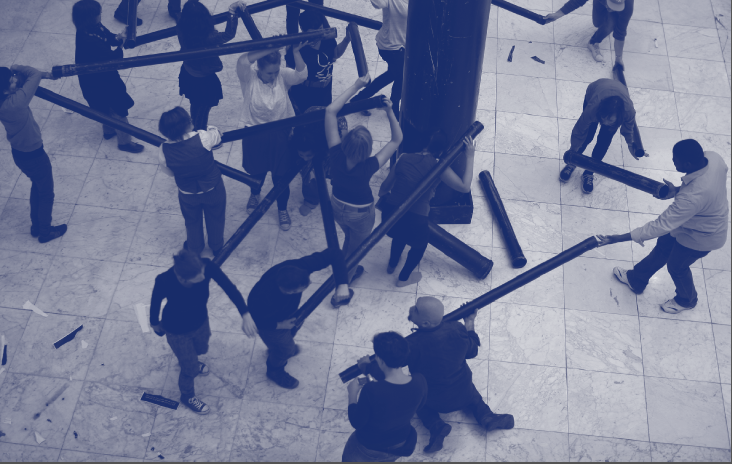I signal a publication by Pietro Floridia, Alicja Borkowska, Rachel Shapiro, Louise Glassier and others, which just came out one Europe’s new ‘ghettos’. The collection is the outcome of an artistic project I participated in during 2013-2015 in seven European cities, and which explored the meaning of ethnic and political closure in Europe’s multicultural urban societies.
At the heart of the project was a desire to redefine the concept ‘ghetto’ in Europe today -a hazardous but also a necessary exercise, as the term continues to occupy a central place in the construction of European, and migrant, identities.
What meaning do we ascribe to the ‘ghetto’? What role does the term play in delineating inclusion and exclusion in Europe’s urban spaces? And how can one narrate people’s intricate -and often contradicting- daily experiences of living in the ghetto in valuable ways?
By using ‘dramatic traces‘ and artistic installations as the method of choice, the project took some distance from the classic sociological studies on the subject. Instead it tried to create an ethnographic & theatrical counterpoint to the often stigmatising and dehumanizing representations that commonly populate public (and academic) discourse. It did so by emphasising the polysemic, subjective and embodied experience of b/ordering processes that characterise citizenship practices in Europe today. To find spaces of freedom, and windows of creativity -despite being enclosed in a seemingly locked space, provided an interesting reflection that emerged from this consciously ‘marginal’ perspective we adopted throughout the project.
Using a series of black pipes of various measures and lengths as props in our workshop, participants could experiment, within a kind of ‘human-sized’ ghetto, the dialectical relationship between enclosure and windows, the art of finding ways out where all seems blocked.
The publication as well as additional material are available here.




